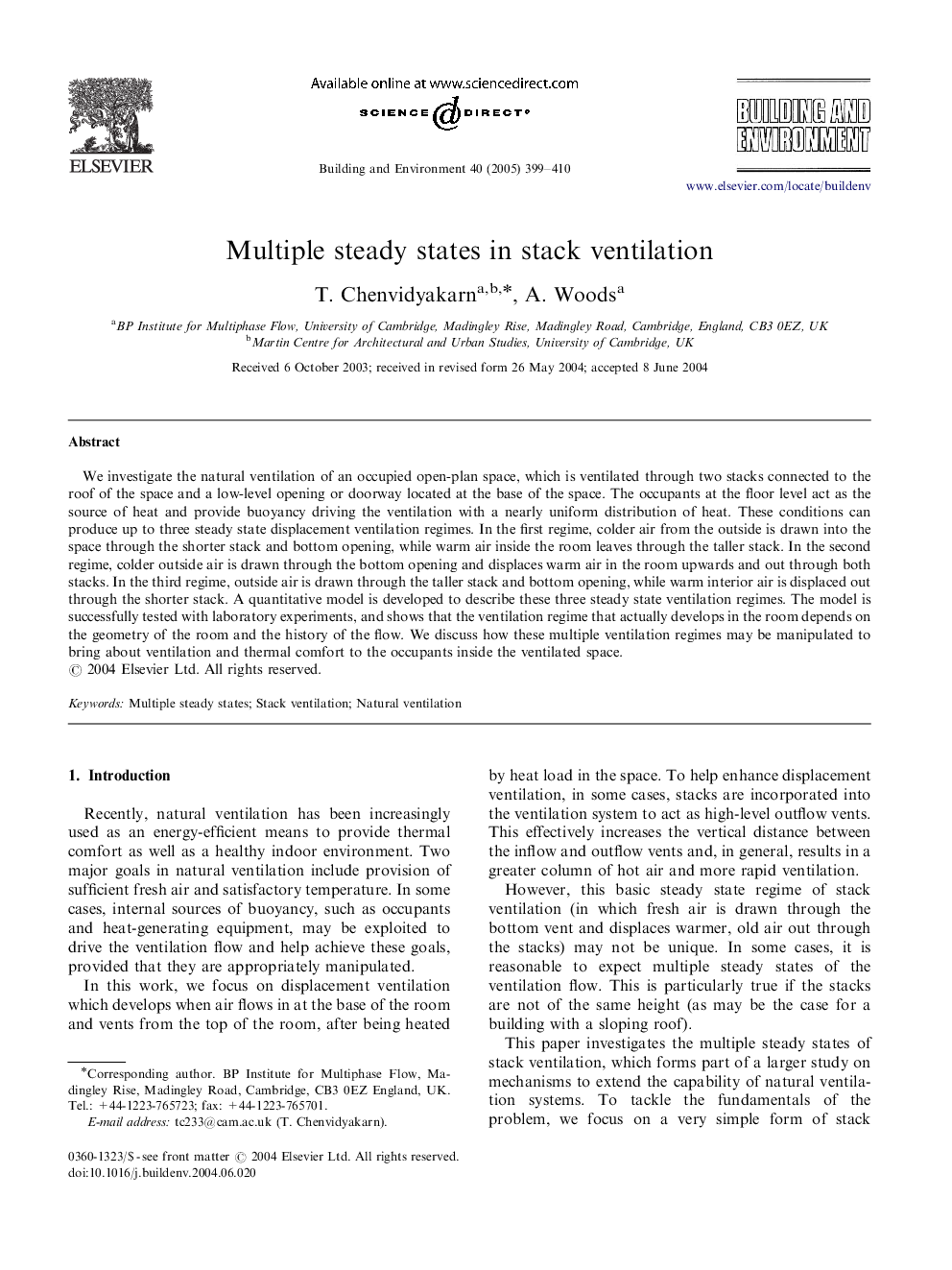| کد مقاله | کد نشریه | سال انتشار | مقاله انگلیسی | نسخه تمام متن |
|---|---|---|---|---|
| 10283284 | 502689 | 2005 | 12 صفحه PDF | دانلود رایگان |
عنوان انگلیسی مقاله ISI
Multiple steady states in stack ventilation
دانلود مقاله + سفارش ترجمه
دانلود مقاله ISI انگلیسی
رایگان برای ایرانیان
کلمات کلیدی
موضوعات مرتبط
مهندسی و علوم پایه
مهندسی انرژی
انرژی های تجدید پذیر، توسعه پایدار و محیط زیست
پیش نمایش صفحه اول مقاله

چکیده انگلیسی
We investigate the natural ventilation of an occupied open-plan space, which is ventilated through two stacks connected to the roof of the space and a low-level opening or doorway located at the base of the space. The occupants at the floor level act as the source of heat and provide buoyancy driving the ventilation with a nearly uniform distribution of heat. These conditions can produce up to three steady state displacement ventilation regimes. In the first regime, colder air from the outside is drawn into the space through the shorter stack and bottom opening, while warm air inside the room leaves through the taller stack. In the second regime, colder outside air is drawn through the bottom opening and displaces warm air in the room upwards and out through both stacks. In the third regime, outside air is drawn through the taller stack and bottom opening, while warm interior air is displaced out through the shorter stack. A quantitative model is developed to describe these three steady state ventilation regimes. The model is successfully tested with laboratory experiments, and shows that the ventilation regime that actually develops in the room depends on the geometry of the room and the history of the flow. We discuss how these multiple ventilation regimes may be manipulated to bring about ventilation and thermal comfort to the occupants inside the ventilated space.
ناشر
Database: Elsevier - ScienceDirect (ساینس دایرکت)
Journal: Building and Environment - Volume 40, Issue 3, March 2005, Pages 399-410
Journal: Building and Environment - Volume 40, Issue 3, March 2005, Pages 399-410
نویسندگان
T. Chenvidyakarn, A. Woods,